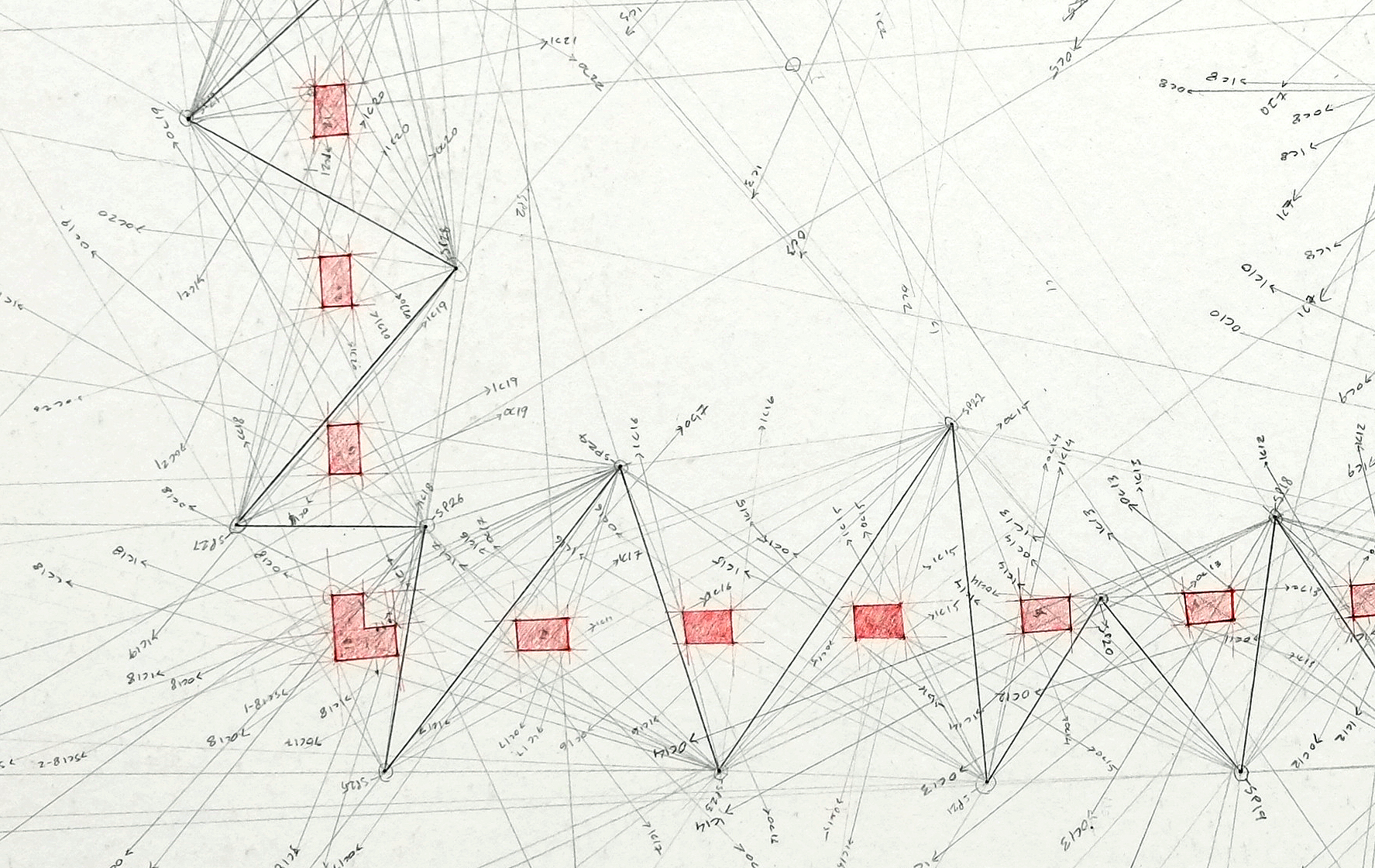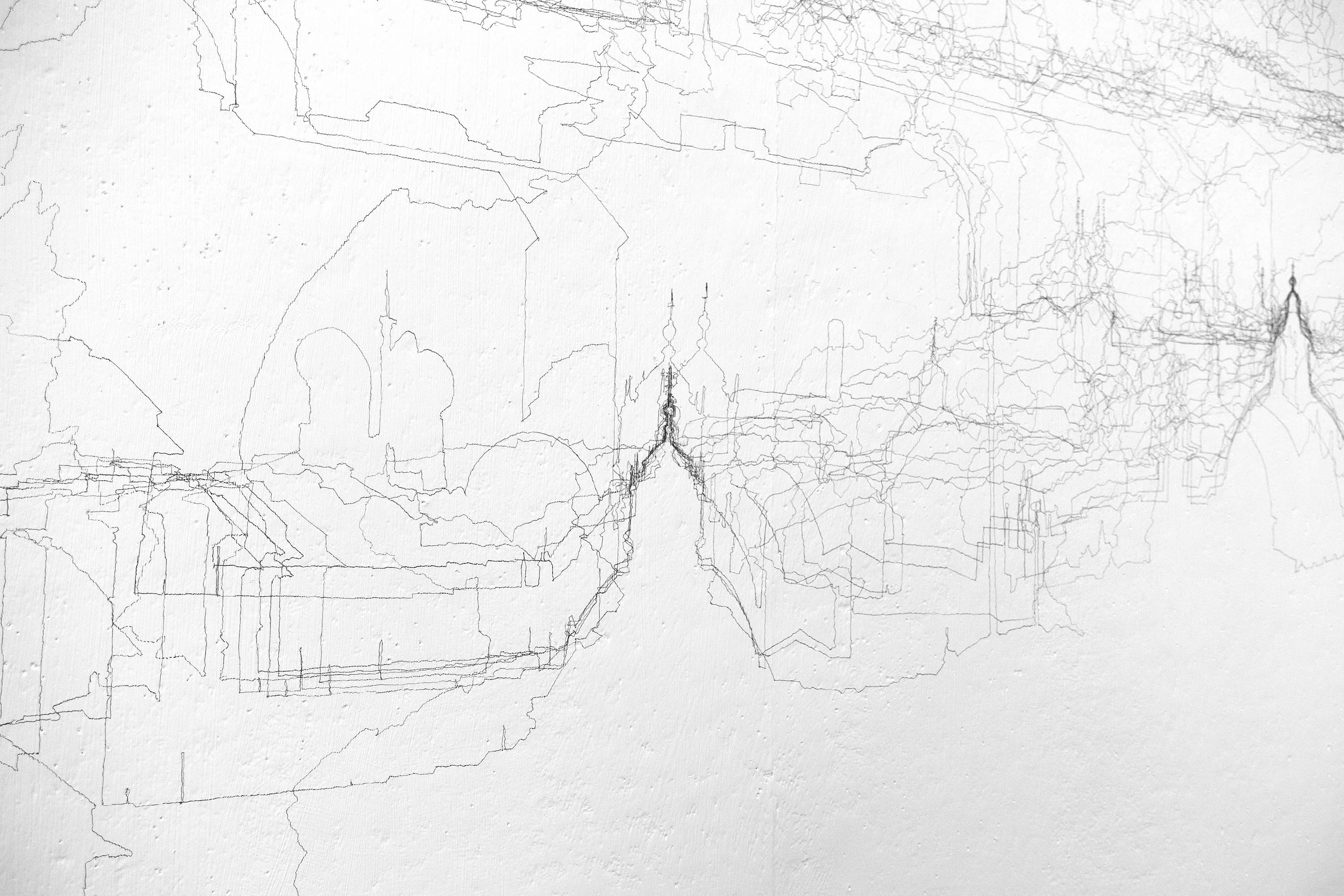



Plane table survey of the cortile of the American Academy in Rome, and Peregrine Projection tracing of Segovia, 2015.
Peregrine Projections
As the story of Cain and Abel illustrates, the antagonism between the nomadic and the sedentary is rooted in an age-old division between their discrete means of defining territory and ascribing symbolic significance to it. Peregrine Projections is a series of drawings, based on rituals derived from plane table surveying, that use walking to unfold the relationship between the monument and the civic ground of the city.
In the incessant cycles of parades and protests, the many bell towers of Segovia act as navigation points across the city and landscape, structuring routes of procession from plaza to plaza, while the bells count time through day and night. This relationship between the vertical figure and the ground encodes how the significance of monuments and public spaces may be re-activated, or challenged, through ritualized forms of walking. Such ambulatory actions, aimed at claiming and defining territory, are usually collective. In Peregrine Projections, the particular dance with a monument and its territory unfolds through the actions of a solitary individual.
Each drawing is an “automatic cartography,” constructed from photographs taken at regular intervals during a walk, stalking a particular point on the horizon, such as a bell tower, dome, or obelisk. The topography of each drawing is the accumulation of the horizon lines from the set of photographs, projected and traced sequentially.
The process of tracing is a secondary walk, in the space of the projection, with pencil across the horizon. In this secondary walk, the forms of the landscape and of the architecture echo and merge with each other, creating strange hybrids and juxtapositions. Certain recognizable elements, appearing in each photograph in a different location, embroider their particular rhythm across the landscape. From a distance, only the negative figure of the monument is discernable within a cloud of graphite. Upon approach, individual spaces and moments within the city appear while the city as an image disappears beyond one’s peripheral vision.
Over time, walking in the city became analogous to drawing, as if I were the tip of a pencil moving along the edge of a Mayline or drafting triangle. The anticipation of the drawing started to direct the walk itself, driving me to roam the city through unlikely paths, while remaining tethered to the steeple, dome, or obelisk by the tenuous thread of a sightline.
Segovia:





Peregrine Projections: Catedral de Segovia & Iglesia de Vera Cruz, Segovia, Spain (2014/15/18)
Rome:





Palatine Hill and Forum. 2015. Graphite on wall.


Gazometro, the Container. 2015. Graphite on wall.
Camino de Santiago (In Progress):




A scroll of the landscape of the Camino de Santiago stretching from Segovia to Santiago de Compostela and to Porto. Currently in progress, showing segments of roughly 4 days from Porto toward Santiago de Compostela. Graphite on paper. 60” wide.
Peripatetic Drawing Machine:





Instrument created as an alternative to the photographic process used through much of Peregrine Projections. The aim was to regain some of the serendipity involved in plane table surveying.